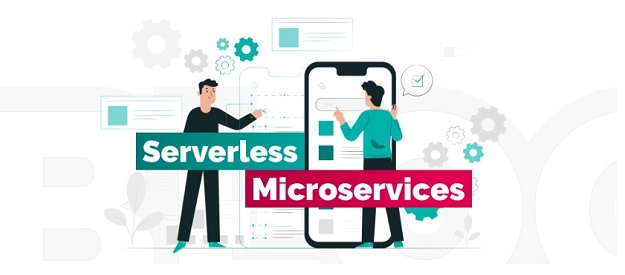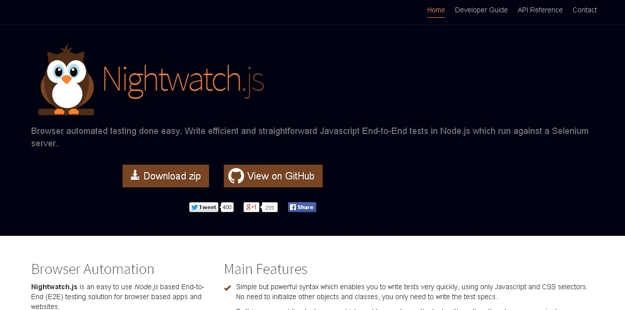Serverless Microservices are the new talk of the town. They are all the rage right now and developers are seeing the benefits of building microservices as a way to improve their applications. Microservices is a software architecture where multiple small-sized services communicate with each other using RPC or message passing. A single application is made up of many services that interact with each other but are not dependent on each other, nor do they share code.
Microservices have been around for a long time but have only recently started to gain popularity due to the benefits provided by this approach to building applications. In this article we will first understand what serverless microservices are, then we will take a look at their pros and cons and at the end, we will discuss some best practices for building microservice applications. So, let’s get started.
What are Serverless Microservices?
Serverless microservices are a way to get rid of the server. The cloud has made it easy to spin up servers on demand, and for many applications, this is an acceptable solution. But still, there are many more use cases where we would like to keep things under our complete control. Serverless microservices enable us to focus on our code and not worry about servers.
Serverless microservices are different from cloud-scale services in that they don’t require you to provision hardware or operate any load balancers. They also don’t require you to manage any software-defined infrastructure (SDI). Instead, the service provider provides everything needed for your application: the compute resources (e.g., CPU and memory), networking, storage, and other components that are necessary for your application to run successfully and securely in production.
With serverless microservices, you need not worry about scaling your app or maintaining its environment. It has become popular because they allow developers to build applications with as much flexibility as they need without worrying about scaling issues or managing infrastructure themselves.
Pros of Serverless Microservices
Serverless microservices are an emerging type of software application. They can be deployed as a single-purpose application (for example, a website or mobile app), or they can be used to build applications that require multiple services to work together.
Serverless microservices offer some advantages over traditional applications:
• They’re easy to scale: You don’t need to worry about running out of capacity because the service providers handle all the scaling for you. Also, your application can scale automatically with changes in demand or infrastructure.
• You don’t have to manage servers: As the name suggests, with serverless microservices, you don’t have to worry about using servers, let alone managing them. So it’s beneficial for you to pay only for what you use. With this, you never have to worry about data updates, data security, or infrastructure upgrades anymore.
• You can create new features without having to rewrite existing code: If new customers request service features, later on, developers can create them without having to change any existing code.
• There’s no need for large teams: When building serverless microservices, you only pay for what you use and you don’t have to hire more people or build more infrastructure than is necessary.
• Security: Your service is isolated from other applications on the same server, which means that if one app gets compromised, you don’t have to worry about others being affected by it.
• Flexibility: You define your deployment process and can use any language or framework you want.
Cons of Serverless Microservices
In a lot of ways, serverless is a better way to build microservices than the traditional approach. However, there are some drawbacks to the model:
• The biggest disadvantage of serverless microservices is that the developer only has access to a single account, which means that if the service provider goes out of business, there’s no way to get your data back.
• Another disadvantage is that you can’t easily scale your application beyond a certain point. If you need more capacity or scalability, you have to build it yourself with serverless architecture.
• You can’t see the whole picture. Serverless microservices give you great flexibility and control, but they also require you to be very careful with your code. If you don’t have a clear understanding of how your code is being used and what it’s doing, then you could easily end up with a “monolith” that doesn’t scale well or has security vulnerabilities.
• No control over the code and its environment
• There’s no easy way to add custom middleware or other functionality to your microservice when it’s hosted in a cloud service.
• You can’t go back and change or upgrade your microservice once deployed if you need to make changes later on.
Serverless Microservices Challenges
Serverless microservices is a new approach to building software that uses a cloud-based platform and uses microservices. The idea of this approach is to break the monolith into smaller units of code that are individually hosted on AWS Lambda and can be deployed as a function.
The problem with this approach is that it requires you to manage multiple different systems, which can become confusing and difficult to manage in the long term. Here are some challenges you might face when using serverless microservices:
• You lose control over your codebase. You have no control over the codebase after it has been deployed to your serverless microservices providers, it’s out of your hands!
• Lack of visibility into your system. You can’t check if everything is working properly without going through each function one by one and testing them individually.
• Your code needs to be modularized and maintainable across development teams and iterations.
• You need a clear architecture for your codebase that can scale with your business needs and growth expectations.
• You will need an automated deployment pipeline that deploys your code regularly so you can scale up and down as you need to.
The biggest challenge in building microservices is that your codebase is no longer isolated. Instead, it’s distributed across multiple servers. If you can build a single service and deploy it to many different environments, then your experience will be similar to having multiple instances of the same app running on different machines. But if you want to scale up your application, you need to make sure that all of these instances are running the same codebase and communicate with each other using some kind of communication protocol.
For example, if one instance encounters an error while processing an incoming request, it should tell other instances about it so they can take action accordingly. The process of informing other instances about errors is called debugging or diagnostics.
Serverless Microservices Best Practices
Repositories
Repositories are the central repository for all of your code. They will store all of your application code and dependencies, as well as configuration data such as environment variables, environments, and other project-specific settings.
Repositories also have a place in a microservice architecture because they contain the application’s most important data. This data can be stored in one or more databases, but it doesn’t always make sense to do so.
For example, if you’re building an e-commerce application that sells products online, you might want to store product details in a database that the customer can access directly. But perhaps you want customers to be able to customize some parts of their shopping experience without having to access any external services. Maybe they want to see images or read descriptions of the product before they buy it.
In this case, having a separate database is not necessary because the application itself can serve both purposes: storing product information and serving up images and descriptions when needed by users.
Folder Structure
The folder structure is the foundation of any software project. Because it determines your code structure and many other things. So, it is important to give a good thought about this before building it.
The folder structure for a microservice application should follow this pattern:
• src/ – All of your source files are stored at this location. For example, if you have an API Gateway service, it should have its file called APIGatewayService.java. This is where all your production code lives. src/main – This folder contains all the Java files that are necessary to run the whole application (i.e., JARs).
• This folder contains all the Java files that are necessary to run the whole application (i.e., JARs). package-info – A simple folder that contains import statements for other packages and their version numbers. A good practice is to put this information in a separate file so that you can easily see which versions are used throughout the project
Cloud Resources
Cloud resources are the lifeblood of a cloud-based solution. They include virtual machines, storage, networking, and computing power. In addition to providing these resources, cloud providers also provide an ecosystem of tools such as firewalls, load balancers, databases, application servers, and monitoring solutions.
A good cloud provider should have an integrated solution for provisioning virtual machines and scaling resources up or down as needed so that you can focus on business logic instead of infrastructure management. You should have access to tools that make it easy to create applications that scale with your business growth. Cloud providers often provide additional services such as monitoring and security for free or at a low cost per month.
Cloud resources can be used to manage and scale your applications. Here are some examples of cloud resources:
• Storage: Whether it’s a relational or NoSQL database or a file storage service, there are plenty of options for storing your data in the cloud.
• Infrastructure as a Service (IaaS): IaaS is typically billed on a usage basis, so you pay only for what you use.
• Platform as a Service (PaaS): With PaaS, you don’t have to worry about servers or network administration. Instead, you handle everything yourself from installing packages on your app’s servers to scaling your application up or down as needed.
• Application as a Service (AaaS): This type of cloud service is used to run web apps such as WordPress blogs and e-commerce sites.
Monitoring should be centralized
Centralized monitoring is the best way to monitor your microservices. By centralizing all monitoring, you can easily keep an eye on everything. You’ll be able to configure custom thresholds, which will let you know when something has gone wrong.
If you are using AWS Lambda, we recommend using CloudWatch for centralized monitoring. It’s a free service that lets you create events, groups, and rules that automatically alert you when certain conditions are met.
Microservices should have a large amount of test coverage
Microservices allow you to independently scale and deploy your code, which is especially useful when developing a product that has multiple stages of growth. However, they also require a significant amount of testing and monitoring to ensure that they remain in a stable state.
Here are three approaches that you can use to test your microservices application:
• Unit testing – This approach involves testing individual components of an application. For example, you might write unit tests for individual functions within your application or individual classes in your application’s framework.
• Integration testing – This approach involves testing interactions between components in the system. For example, you might write integration tests that verify the proper functioning of calls between different components in your system.
• System testing – This approach involves testing all interactions between all components in the system, including both internal and external interactions with other systems or services outside of your organization — even if those systems are not controlled by yourself or by another person or organization within your organization.
Final words
Although serverless microservices may not be for everyone, it is an exciting technology and can be a compelling approach to building applications. As time goes on, we expect to see more and more companies using this trend for their backend application development. It is worth exploring this approach to see if it will turn out to be the best solution for your project.





